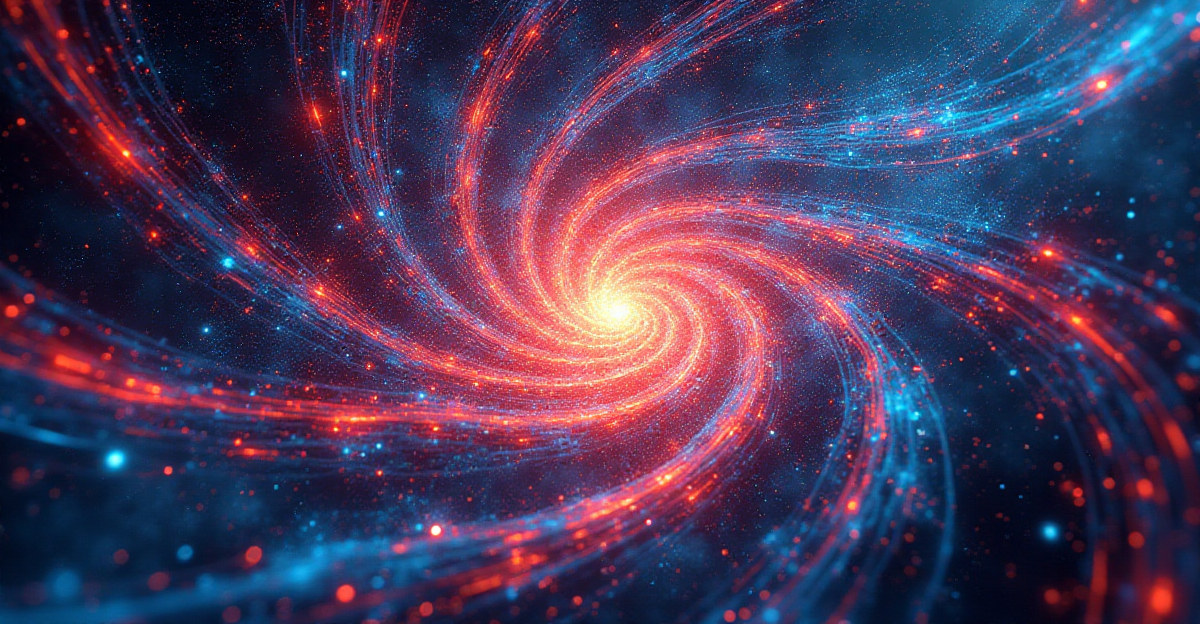By means of topological protection, the manipulation of quantum knots offers a novel method for producing reliable quantum computers. My investigation on topological quantum computation has shown how these mathematical frameworks might transform quantum information handling. A special approach to encode data naturally shielded from ambient noise and decoherence is offered by quantum knots. Recent work has effectively produced and controlled quantum knots in ultracold atomic gases and quantum fluids. The field synthesizes useful quantum engineering with abstract mathematical ideas from knot theory. New kinds of quantum knots with characteristics allowing fault-tolerant quantum computation have been found by scientists. Study of these structures has produced understanding of basic physics and quantum field theory. A road towards useful quantum computers is presented by these topological states of matter. From condensed matter to particle physics, the studies links several fields of physics.
Table of Contents
- Weaving Space-Time Information: Quantum Knots and the Future of Computing
- Topological Protection: A New Era for Quantum Computing
- Mathematical Beauty Meets Quantum Reality
- Extra’s:
Weaving Space-Time Information: Quantum Knots and the Future of Computing

Imagine a time where knowledge resides in the very fabric of space and time rather than in conventional bits and bytes. Known as quantum knot theory, this mind-bending idea is an interesting fusion of quantum knots with the vibrant subject of topological computing.
Quantum Knots: A New Frontier in Computing
Have you ever spun a string through a knot? Every knot has an own form, right? Pulling or stretching the string doesn’t change the basic knot structure. This parallels the topological protection provided by quantum knots. They hold the secret to a totally fresh approach of understanding information and are essentially like knots spun in the very fabric of space-time.
These quantum knots are actual rather than only speculative mathematical ideas now. In practical quantum systems such as ultracold atomic gases, scientists are actively researching and controlling them. Consider these gases as a superfluid—that is, when atoms flow frictionless. Future uses in quantum computing will be made possible by scientists creating and researching quantum knots by adjusting these gasses, so surprising you may find.
Harnessing the Power of Entanglement
Quantum knots are among its most fascinating features the capacity to become entangled. Imagine two knots joined together; they are now one. Similar but instead of physical knots, quantum entanglement is a unique link between two quantum knots that lets them instantly transmit information independent of distance.
Imagine two knotted knots: if you untangle one and work on the other, even if they are miles distant, the other one will react instantly. By allowing immensely rapid and strong computations, quantum entanglement has the great power to transform quantum computing.
Examining quantum knots is about deciphering the basic character of reality, not only about creating faster computers. Through their study of these knots, researchers are better able to grasp the complex interactions between quantum mechanics and the fabric of space-time structures, so perhaps exposing fresh dimensions in our knowledge of the cosmos.
Real-Life Examples:
- MIT’s Quantum Knots: Researchers at MIT are using quantum knots to explore new forms of quantum information processing. They’re investigating how quantum knots can be manipulated to perform complex calculations, potentially leading to advancements in areas like cryptography and drug discovery.
- Quantum Entanglement Experiments: Scientists have conducted numerous experiments demonstrating quantum entanglement. One notable experiment involved entangling two photons and sending them to opposite ends of the earth. By manipulating one photon, researchers were able to instantly influence the state of the other, proving the power of this remarkable phenomenon.
Topological Protection: A New Era for Quantum Computing

Imagine a world in which computers can solve hitherto unachievable challenges, so releasing discoveries in disciplines including artificial intelligence, materials science, and medicine. Thanks to the ground-breaking idea of topological protection, this future is closer than you would believe.
Unlocking the Potential of Topological Protection
A strong idea with the key to create more dependable and stable quantum computers is topological protection. Consider a knot wound in a rope. The basic form of the knot remains the same regardless of the force you apply to the rope either pulling or stretching. In a similar vein, topological protection shields quantum information from noise and errors, therefore addressing major obstacles in the construction of useful quantum computers.
Ever wonder about the mechanism underlying topological protection? Imagine a loop of string within the fabric of reality. Representing a quantum knot, a basic unit of quantum information, this loop This loop is naturally resilient; you cannot untie it without breaking the string. This resistance results from a subfield of mathematical physics sometimes known as quantum topology.
Building the Future of Quantum Computing
Topological protection is intimately connected to the amazing realm of quantum entanglement. Imagine two buddies named Alice and Bob connected by a unique type of relationship. Bob knows exactly what Alice is thinking of whenever she considers a number, even if they live far apart. This relationship is like quantum entanglement—two particles coupled sufficiently that, independent of distance, they instantly share information. In quantum computers, this entanglement could be harnessed to do computations at astonishing rates.
Researchers are investigating topological protection in practical systems right now. Using super-cold atoms, which act like superfluids, is one exciting path to create the perfect setting for quantum knot manipulation.
Let’s look at a group of MIT researchers striving to fully realize topological protection. These scientists are looking at how intricate computations could be carried out using quantum knots, hence perhaps generating discoveries in fields including cryptography and medicine development. Pushing the limit of quantum topology and its ability to transform computing, they are working with several approaches to produce and control quantum knots.
The Theoretical Foundations of Topological Protection
Originating in the discipline of theoretical physics, topological protection is investigated alongside other mind-bending ideas as string theory and quantum gravity. Topological protection depends critically on space-time structures, which help to explain how these quantum knots arise and interact inside the fabric of reality.
Topological protection is also essential for quantum engineering, the discipline dedicated to create fresh quantum devices able to exploit quantum mechanics. Including topological protection into these devices will help us to produce more dependable and effective quantum computers, therefore opening the path for a future where the opportunities are almost unlimited.
Quantum computing has bright future prospects in using topological protection. Protecting quantum information against noise and mistakes will open a new chapter of computing and enable the solution of hitherto unthinkable challenges. Here is where topological protection really shines and opens the path for an infinitely possible future.
Mathematical Beauty Meets Quantum Reality

Imagine a world in which advances in health, materials science, and artificial intelligence follow from computers solving now unachievable challenges. Thanks to the innovative idea of quantum knots topology, this future is nearer than you would believe. Opening a road towards a new era of computing, this intriguing topic combines the elegance of math with the secrets of quantum physics.
Not only is quantum knots topology an abstract mathematical idea; scientists are actively investigating and altering in real-world quantum systems. Imagine a knot fastened in a string to grasp this idea. The basic form of the knot stays the same regardless of the amount of pulling or stretching you do the string. This parallels the defense provided by quantum knots. They are basically knots woven in the fundamental fabric of space-time structures, offering a special means of encoding and protection of data.
By providing a more consistent and dependable method to do computations, quantum knots topology is transforming topological computing. Imagine a time where computers perform difficult tasks by using the amazing speed of entangled particles. Surely that would be fantastic. From drug discovery to materials science, quantum knots topology offers a strong foundation for managing this sensitive quantum phenomenon, so creating fascinating opportunities for building novel computing approaches and applications in many spheres.
The Power of Quantum Knots Topology
For quantum computing, quantum knots topology is a paradigm-shifting solution providing a fresh approach to encode and safeguard data. This method enables us to create more strong and dependable quantum computers equipped to address quantum noise and mistakes.
Imagine, then, that you are attempting to construct a house on a foundation that is always changing. Building a solid structure might prove somewhat challenging. This reminds one of the difficulties experienced by quantum computers. They are quite sensitive to quantum noise, which could cause mistakes and disturb calculations. By offering a more consistent and dependable method of encoding and safeguarding data, quantum knots topology aids to solve this challenge.
By offering a fresh perspective for comprehending and controlling quantum systems, quantum knots topology has the power to transform disciplines including quantum engineering and theoretical physics. We are already investigating, for instance, how quantum knots may be utilized to produce fresh quantum materials with special qualities. For several sectors, the possibility of superconductors created from these knots working at normal temperature would be revolutionary.
The Future of Quantum Knots Topology
A fast developing discipline with the ability to change our planet is quantum knots topology. This strong idea presents a fresh approach to view and control quantum systems, which results in discoveries in several spheres. Understanding and controlling quantum knots will help us to open a future in which the opportunities are really unlimited.
As we keep investigating the possibilities of quantum knots topology, we should anticipate even more amazing developments in the discipline of quantum computing. This idea could transform our knowledge of the cosmos and produce ground-breaking revelations that would help everyone.
Should you wish further knowledge on the fascinating field of quantum knots topology, I advise you to investigate online or review some of the materials below. As we stand on the brink of a new computing age, quantum knots topology could lead us to locations we have never known!
Extra’s:
If you’re fascinated by the intersection of quantum mechanics and topology, you might also be interested in exploring the fascinating world of “Plasmonic Cloaking: Engineering Light to Hide Quantum Sensors.” This post delves into the use of plasmonics to manipulate light and potentially conceal quantum sensors, a concept with implications for both fundamental research and cutting-edge technology. For a deeper dive into the extreme conditions of the cosmos, be sure to check out “Nuclear Pasta Physics: The Strongest Known Material in Neutron Stars.” This post explores the exotic and incredibly dense matter found within neutron stars, where nuclear pasta, a unique form of matter, exists.
For those seeking a more in-depth exploration of the research behind quantum knots, consider these external resources: “Phys. Rev. Research 6, 043013 (2024) – Optical induction of monopoles, knots, and skyrmions in quantum gases” offers a scientific exploration of the potential for creating knots in quantum gases using optical methods. This study provides valuable insights into the experimental possibilities of manipulating topological structures in quantum systems. Alternatively, the preprint “[1906.09016] Knot Topology in Quantum Spin System” delves into the theoretical aspects of knot topology within quantum spin systems, offering a deeper understanding of the underlying mathematical framework.












2 thoughts on “Quantum Knots: Tying Space-Time into Topological Computers”